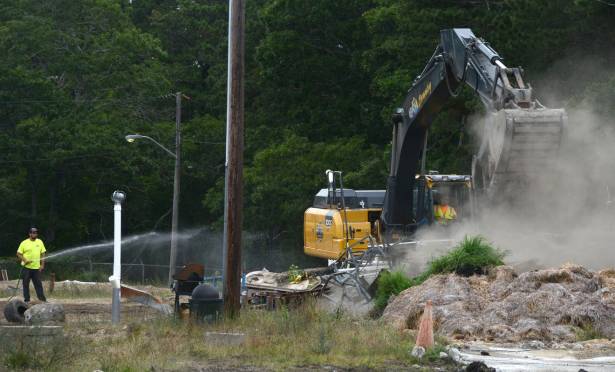As Barnstable Hunts for New Sources of Public Drinking Water, PFAS Contamination Rears Its Ugly Head
By Jeannette Hinkle | Cape Cod Times | September 3, 2021

Read the full article by Jeannette Hinkle (Cape Cod Times)
"In its hunt for new sources of drinking water, Barnstable must grapple with a grim reality spelled out in an April 2021 report by the engineering firm Weston & Sampson.
‘…It is generally understood that any source developed in Barnstable has a risk of detection of PFAS,’ the report’s authors wrote.
PFAS, or per- and polyfluoroalkyl substances, are a group of thousands of man-made chemicals, some of which have been linked to health problems including increased cholesterol, immune system issues, cancer and thyroid hormone disruption.
Barnstable — home to three documentedsources of significant PFAS contamination including the former Barnstable County Fire Rescue & Training Academy, the Cape Cod Gateway Airport and the Barnstable Water Pollution Control Facility — is already treating Hyannis’s existing drinking water to remove the “forever” chemicals.
Because of the treatment, estimated to cost $900,000 annually, town officials say the water that flows out of the taps in Hyannis is safe to drink.
But the wells currently on line don’t yield enough water to meet all demand, according to a 2019 report by Weston & Sampson.
In 2020, the deficit in the Hyannis water system was 1.87 million gallons per day, according to the report. By 2040, that deficit is projected to grow to 3.23 million gallons per day, an increase of roughly 72%.
‘Weston & Sampson recommends that the Town of Barnstable should immediately initiate the investigation and development of additional sources of groundwater supply, which will take years to bring on line,’ the authors of the 2019 report wrote.
Barnstable has now zeroed in on three new potential sources of drinking water. One is north of Route 6 in the Bridge Street Conservation Area, another is north of Route 6 west near Old Jail Lane, and one is in the West Barnstable Conservation area, according to Weston & Sampson’s April 2021 report.
Despite the comprehensive search focused in less-developed areas of Barnstable, two of the three most promising sources identified by Weston & Sampson have water quality problems. The potential well site in the West Barnstable Conservation Area would require treatment for manganese, and the the Bridge Street Conservation Area would require treatment for PFAS.
Why is the town considering new drinking water sources that are tainted?
Contamination is only one of many considerations town officials will weigh as they select a new source of drinking water, said Hans Keijser, supervisor of the Barnstable Water Supply Division.
Also at play are other factors, such as who owns the land, whether the area is considered for future development, how much it would cost to build in that location, and how much water the town can safely withdraw. The source contaminated with PFAS, for example, is expected to yield the highest quantity of water of the three new sources under strong consideration.
Why is the town considering new drinking water sources that are tainted?
Contamination is only one of many considerations town officials will weigh as they select a new source of drinking water, said Hans Keijser, supervisor of the Barnstable Water Supply Division.
Also at play are other factors, such as who owns the land, whether the area is considered for future development, how much it would cost to build in that location, and how much water the town can safely withdraw. The source contaminated with PFAS, for example, is expected to yield the highest quantity of water of the three new sources under strong consideration.
‘The upper management and leadership in town have to make the decision, what’s more important?’ Keijser said. ‘It’s not, ‘’Is there contamination? Yes or no.‘’ It’s a little bit more complex than that.’
Contamination may once have been a deal-breaker in the search for new drinking water supplies, but is now so widespread that a supplier would be lucky to find a pristine source, said Andrew Gottlieb, executive director of the Association to Preserve Cape Cod.
A big reason for that, he said, is the Cape’s reliance on septic systems, which become depositories for all of the chemicals that people consume in their daily lives, ranging from antidepressants to PFAS, which is still used in consumer products ranging from cooking pans to cosmetics to waterproof fabrics.
‘The vast majority of wastewater treatment on Cape Cod happens in backyard septic systems, none of which are intended to remove contaminants,’ Gottlieb said. ‘So you have a hundred-and-something thousand individual small backyard-based point sources that provide access to the groundwater for unregulated contaminants and emerging contaminants like PFAS, like perchlorate before it, as well as things that are much more benign.'”…
This content provided by the PFAS Project.
Location:
Topics: